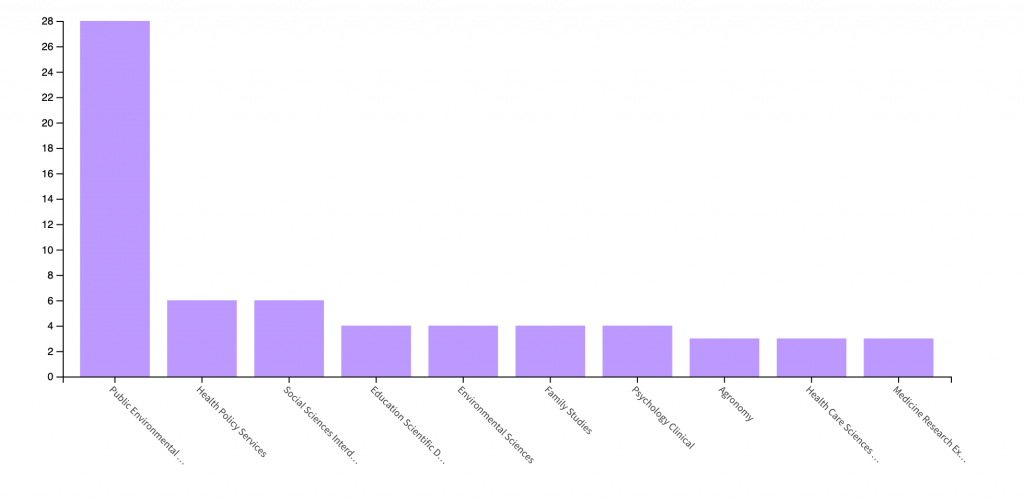by Gabriel Bruguier
On April 2-5, a group of UNL Libraries librarians will be traveling to Minneapolis to attend and present at the Association of College and Research Libraries’ conference, Democratizing Knowledge + Access + Opportunities. [1] I will be among those presenting, with a poster titled, “Reparative Research Practices: Addressing Epistemic Inequity in University Research.”
Reparative Research Practices (RRP) are a novel and disruptive approach to university research, defined as research practices that can intervene and replace practices across the research life cycle to address epistemic harms and injustices, incomplete knowledge production, shared knowledge, and knowledge use.
One of the practices that figures prominently in RRP is participatory research methods (PR). According to Vaughn and Jacquez’s definition there are three salient features of PR. PR:
- “Encompasses research designs, methods, and frameworks that use systematic inquiry in direct collaboration with those affected by an issue being studied for the purpose of action or change.”
- “Engages those who are not necessarily trained in research but belong to or represent the interests of the people who are the focus of the research”
- “Researchers…often choose research methods and tools that can be conducted in a participatory, democratic manner that values genuine and meaningful participation in the research process.” [2]
Community participation and the democratic approach to research methods break with traditional research practices. The intended result is research that, “contributes directly to the flourishing of human persons, their communities, and the ecosystems of which they are part.” [3] Click here for an informative case study of participatory design being utilized in a civil engineering water infrastructure project.
To gain some insight into PR implementation closer to home, particularly in the sciences, I conducted a small study of University of Nebraska research. In the Web of Science: Core Collection (WOS), I selected the field “Affiliation” and entered keywords encompassing the University of Nebraska system. Next, I added a line joined by “AND” selected the field “All Fields,” and entered the exact keywords “participatory design” OR “participatory research” OR “participatory research design,” which returned n=79 results. Then I refined these results by research done since 2000, and limited to journal articles, bringing that down to n=73 results.

These results were such that at least one of the authors is affiliated with the University of Nebraska System, but not necessarily the lead author. And upon a quick review of title and abstracts, the majority did in fact utilize PR methods. I decided to do a more in-depth review on the most populated category, “Population Environmental Occupational Health,” which I will return to below.
I then used the built-in feature “Analyze Results” to build a graph to show how these publications are distributed among WOS categories. Figure 1 shows the breakdown of these results by category, which I limited to the top 10.

Figure 1: PR publications sorted by category [4]
Among the 28 articles in the category “Population Environmental Occupational Health”, I then performed a quick screening with the following inclusion criteria: 1) Does this research utilize PR research methods?; and 2) Was the research conducted in Nebraska? This returned n=7 results, which I then exported to Zotero, and created a bibliography. I invite you to have a research moment and explore participatory research in Nebraska!
- ME Cramer et al., “The Feasibility and Promise of Mobile Technology with Community Health Worker Reinforcement to Reduce Rural Preterm Birth,” PUBLIC HEALTH NURSING 35, no. 6 (November 2018): 508–16, https://doi.org/10.1111/phn.12543;
- HM Meyer et al., “Unmet Expectations in Health Care Settings: Experiences of Transgender and Gender Diverse Adults in the Central Great Plains,” QUALITATIVE HEALTH RESEARCH 30, no. 3 (February 2020): 409–22, https://doi.org/10.1177/1049732319860265;
- ADK Pelster et al., “Tobacco Use and Its Relationship to Social Determinants of Health in LGBT Populations of a Midwestern State,” LGBT HEALTH 2, no. 1 (March 2015): 71–76, https://doi.org/10.1089/lgbt.2014.0012;
- SS Rajaram et al., “Partnering With American Indian Communities in Health Using Methods of Strategic Collaboration,” PROGRESS IN COMMUNITY HEALTH PARTNERSHIPS-RESEARCH EDUCATION AND ACTION 8, no. 3 (FAL 2014): 387–95, https://doi.org/10.1353/cpr.2014.0036;
- SS Rajaram et al., “Feasibility of Training/Education of Tattoo Artists in the Prevention of Sex Trafficking,” PROGRESS IN COMMUNITY HEALTH PARTNERSHIPS-RESEARCH EDUCATION AND ACTION 16, no. 2 (SUM 2022): 271–76, https://doi.org/10.1353/cpr.2022.0030;
- D Schmidt-Grimminger et al., “HPV Knowledge, Attitudes, and Beliefs Among Northern Plains American Indian Adolescents, Parents, Young Adults, and Health Professionals,” JOURNAL OF CANCER EDUCATION 28, no. 2 (June 2013): 357–66, https://doi.org/10.1007/s13187-013-0468-y;
- T Tchouankam et al., “Recruiting Low-Income African American Men in Mental Health Research: A Community-Based Participatory Research Feasibility Study,” AMERICAN JOURNAL OF MENS HEALTH 15, no. 3 (May 2021), https://doi.org/10.1177/15579883211018418.
Notes:
[1] ACRL 2025 Conference Webpage: https://www.ala.org/events/acrl-2025-conference
[2] Vaughn, L. M., and F. Jacquez, “Participatory Research Methods—Choice Points in the Research Process,” Journal of Participatory Research Methods 1, no. 1 (2020): https://doi.org/10.35844/001c.13244
[3] Cited in Vaughn and Jacquez.
[4] Unfortunately, the image generator in WOS cut off some category names on the x-axis. Here is a complete list of each name:
- Public Environmental Occupational Health
- Health Policy Services
- Social Sciences Interdisciplinary
- Education Scientific Disciplines
- Environmental Sciences
- Family Studies
- Psychology Clinical
- Agronomy
- Health Care Science Services
- Medicine Research Experimental
